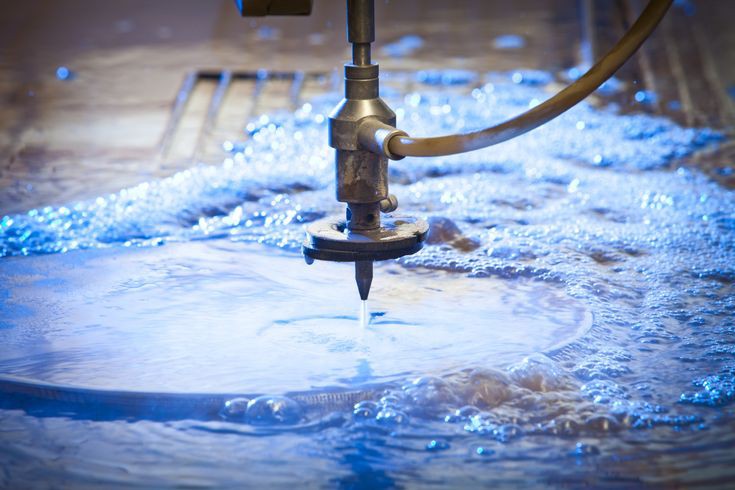In the realm of manufacturing, the quest for precision and adaptability drives the exploration of cutting-edge techniques. Among them, waterjet cutting has emerged as a standout method, offering a multitude of benefits that address diverse manufacturing needs across industries.
Precision Cutting, Cool and Clean
Waterjet cutting stands out for its ability to deliver precise cuts without introducing heat-affected zones (HAZ). Unlike thermal methods such as laser or plasma cutting, waterjet cutting maintains material integrity, making it perfect for heat-sensitive materials like plastics, composites, and metals.
Versatility Across Materials
One of the greatest strengths of waterjet cutting lies in its versatility across various materials. Whether it’s metals such as steel, aluminum, or exotic alloys, or non-metal materials like stone, glass, ceramics, and composites, waterjet cutting handles them all effortlessly. This versatility makes it indispensable across industries from aerospace and automotive to architecture and beyond.
Complex Shapes Made Easy
Waterjet cutting excels at creating complex shapes and intricate patterns with impeccable accuracy. From basic geometric designs to highly detailed contours, waterjet cutting reproduces them with precision, catering to industries where intricate shapes are crucial, such as aerospace and medical manufacturing.
Eliminating Heat Distortion
Since waterjet cutting is a cold cutting process, it eliminates the risk of heat distortion, microfractures, or warping in the material being cut. This feature is especially valuable for materials sensitive to heat, ensuring high-quality cuts without compromising material integrity.
Minimal Material Waste
Waterjet cutting is highly efficient, generating minimal material waste. Its narrow kerf width allows for efficient material usage and reduced scrap, contributing to cost savings and sustainable manufacturing practices.
Environmentally Friendly Solution
Compared to methods involving chemicals or generating harmful emissions, waterjet cutting is eco-friendly. It utilizes water and abrasive materials, which can often be recycled, reducing environmental impact and meeting stringent regulations.
Capable of Cutting Thick Materials
Waterjet cutting handles thick materials that may pose challenges for other methods. Whether it’s hefty metal plates for industrial machinery or thick stone slabs for architectural features, waterjet cutting handles substantial material thicknesses with ease.
No Tool Wear
Unlike traditional methods that experience tool wear over time, waterjet cutting doesn’t involve tool degradation. This means consistent cutting quality without the need for frequent tool changes, reducing downtime and costs.
Safety and Operator-Friendly
Waterjet cutting prioritizes operator safety by producing no harmful fumes, dust, or sharp edges. Automated features further enhance safety during operation, making it a preferred choice for manufacturing environments.
In summary, waterjet cutting offers unparalleled precision and adaptability across a wide range of materials and industries. Its ability to deliver clean, precise cuts without heat distortion, coupled with its versatility and efficiency, makes it an indispensable tool for modern manufacturing processes, pushing the boundaries of what’s achievable in manufacturing.

